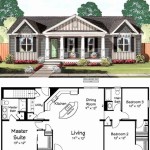Energy efficient house plans are blueprints for constructing homes that minimize energy consumption and maximize sustainability. These plans prioritize energy-saving measures, such as efficient insulation, proper ventilation, and the use of renewable energy sources. One notable example of an energy efficient house plan is the U.S. Department of Energy’s Zero Energy Ready Home program, which sets rigorous standards for energy efficiency and encourages the use of solar panels and other renewable technologies.
Incorporating energy efficient house plans offers numerous benefits, including lower utility bills, reduced environmental impact, and improved indoor air quality. By carefully considering factors like building orientation, window placement, and energy-efficient appliances, homeowners can create comfortable and sustainable living spaces that align with their environmental values.
In the following sections, we will delve into the key elements of energy efficient house plans, exploring specific strategies and technologies that can help homeowners achieve significant energy savings and live more sustainably.
Energy efficient house plans prioritize strategies and technologies that minimize energy consumption and maximize sustainability. Here are 10 key points to consider:
- Proper insulation
- Efficient windows
- Air sealing
- Energy-efficient appliances
- Renewable energy sources
- Passive solar design
- Energy-efficient lighting
- Smart home technology
- Water conservation
- Sustainable materials
By incorporating these elements into the design and construction of their homes, homeowners can create comfortable and sustainable living spaces that significantly reduce energy consumption and environmental impact.
Proper insulation
Proper insulation is one of the most important factors in creating an energy efficient house. Insulation helps to keep the heat in during the winter and the heat out during the summer, reducing the amount of energy needed to heat and cool the home. There are many different types of insulation available, including fiberglass, cellulose, and spray foam. The best type of insulation for a particular home will depend on the climate and the construction of the home.
In general, the higher the R-value of the insulation, the better it will resist heat flow. R-value is a measure of the thermal resistance of a material. The higher the R-value, the more resistant the material is to heat flow. For example, an R-value of 19 means that the material will resist heat flow 19 times more than a material with an R-value of 1.
Insulation can be installed in walls, ceilings, and floors. It is important to make sure that all areas of the home are properly insulated, including the attic and basement. If there are any gaps or holes in the insulation, heat can escape, reducing the effectiveness of the insulation.
Proper insulation can significantly reduce the energy consumption of a home. In fact, the U.S. Department of Energy estimates that proper insulation can save homeowners up to 20% on their energy bills.
Efficient windows
Efficient windows are another important factor in creating an energy efficient house. Windows allow light and heat to enter the home, but they can also be a source of heat loss. Inefficient windows can allow warm air to escape during the winter and cool air to escape during the summer, increasing the amount of energy needed to heat and cool the home.
There are a number of factors to consider when choosing efficient windows, including the type of frame, the type of glass, and the window’s U-factor and Solar Heat Gain Coefficient (SHGC).
The type of frame is important because the frame can conduct heat. Metal frames are more conductive than wood or vinyl frames, so they can allow more heat to escape. Wood and vinyl frames are better insulators, so they can help to reduce heat loss.
The type of glass is also important. Single-pane glass is less efficient than double-pane or triple-pane glass. Double-pane and triple-pane glass have a layer of inert gas between the panes of glass, which helps to reduce heat transfer.
The window’s U-factor is a measure of how well the window resists heat flow. The lower the U-factor, the better the window resists heat flow. The SHGC is a measure of how much solar heat the window allows to enter the home. The lower the SHGC, the less solar heat the window allows to enter the home.
When choosing efficient windows, it is important to consider the climate. In cold climates, windows with a low U-factor are important to reduce heat loss. In warm climates, windows with a low SHGC are important to reduce solar heat gain.
Efficient windows can significantly reduce the energy consumption of a home. In fact, the U.S. Department of Energy estimates that efficient windows can save homeowners up to 15% on their energy bills.
Air sealing
Air sealing is the process of sealing all the cracks and gaps in a home’s envelope. This prevents warm air from escaping during the winter and cool air from escaping during the summer, reducing the amount of energy needed to heat and cool the home.
There are a number of areas in a home that need to be air sealed, including:
Around windows and doors
Around pipes and wires
In the attic and basement
In the crawlspace
Air sealing can be done using a variety of materials, including caulk, weatherstripping, and spray foam.
- Caulk is a sealant that is used to fill small cracks and gaps. It is available in a variety of colors to match the surface being sealed.
- Weatherstripping is a seal that is installed around windows and doors to prevent air from leaking in or out. It is available in a variety of materials, including rubber, vinyl, and felt.
- Spray foam is a sealant that is applied as a liquid and then expands to fill cracks and gaps. It is a very effective air sealant, but it can be more expensive than caulk or weatherstripping.
Air sealing is an important part of creating an energy efficient home. By sealing all the cracks and gaps in the home’s envelope, homeowners can significantly reduce their energy consumption and save money on their energy bills.
Energy-efficient appliances
Energy-efficient appliances are appliances that use less energy to perform the same tasks as traditional appliances. They are designed to reduce energy consumption and save homeowners money on their energy bills.
There are a number of different types of energy-efficient appliances available, including refrigerators, dishwashers, clothes washers, and dryers. Energy-efficient appliances are typically more expensive than traditional appliances, but they can save homeowners money in the long run by reducing energy consumption.
When choosing energy-efficient appliances, it is important to look for the Energy Star label. The Energy Star label is a government-backed symbol that indicates that an appliance meets certain energy-efficiency standards. Energy Star appliances are typically 10-20% more energy-efficient than traditional appliances.
In addition to looking for the Energy Star label, there are a number of other factors to consider when choosing energy-efficient appliances, including:
The size of the appliance
The features of the appliance
The cost of the appliance
The energy consumption of the appliance
By considering all of these factors, homeowners can choose energy-efficient appliances that meet their needs and budget.
Here are some additional tips for choosing energy-efficient appliances:
- Choose appliances that are the right size for your needs. A too-large appliance will use more energy than necessary, while a too-small appliance may not be able to handle your needs.
- Choose appliances with features that you will actually use. For example, if you don’t use the self-cleaning feature on your oven, then there is no need to pay extra for it.
- Compare the cost of different appliances before you buy. Energy-efficient appliances may be more expensive than traditional appliances, but they can save you money in the long run by reducing your energy consumption.
- Look for the Energy Star label when choosing appliances. Energy Star appliances are typically 10-20% more energy-efficient than traditional appliances.
By following these tips, homeowners can choose energy-efficient appliances that meet their needs and budget, and save money on their energy bills.
Renewable energy sources
Renewable energy sources are energy sources that are naturally replenished. They include solar energy, wind energy, geothermal energy, and hydropower. Renewable energy sources can be used to generate electricity, heat, and fuel.
Solar energy is the most abundant source of energy on Earth. Solar panels can be used to convert sunlight into electricity. Solar energy can be used to power homes, businesses, and communities. It is a clean and sustainable source of energy that does not produce greenhouse gases.
Wind energy is another renewable energy source that is becoming increasingly popular. Wind turbines can be used to convert the kinetic energy of the wind into electricity. Wind energy can be used to power homes, businesses, and communities. It is a clean and sustainable source of energy that does not produce greenhouse gases.
Geothermal energy is the heat from the Earth’s interior. Geothermal energy can be used to generate electricity or heat homes and businesses. Geothermal energy is a clean and sustainable source of energy that does not produce greenhouse gases.
Hydropower is the energy of moving water. Hydropower can be used to generate electricity. Hydropower is a clean and sustainable source of energy that does not produce greenhouse gases.
Renewable energy sources are an important part of the fight against climate change. They can help to reduce our reliance on fossil fuels and create a cleaner, more sustainable future.
Passive solar design
Passive solar design is a building design approach that takes advantage of the sun’s energy to heat and cool a building. Passive solar design features include:
- South-facing windows: South-facing windows allow sunlight to enter a building during the winter months, when the sun is lower in the sky. This sunlight can help to heat the building and reduce the need for artificial heating.
- Thermal mass: Thermal mass is a material that can absorb and store heat. Common thermal mass materials include concrete, stone, and brick. Thermal mass can help to regulate the temperature of a building by absorbing heat during the day and releasing it at night.
- Overhangs: Overhangs can be used to shade windows from the sun during the summer months, when the sun is higher in the sky. This can help to reduce the amount of heat that enters a building and reduce the need for artificial cooling.
- Proper insulation: Proper insulation is essential for any energy-efficient building, including passive solar buildings. Insulation helps to keep heat in during the winter and out during the summer, reducing the need for artificial heating and cooling.
Passive solar design can be used to create comfortable and energy-efficient homes. By taking advantage of the sun’s energy, passive solar homes can reduce their reliance on fossil fuels and create a more sustainable future.
Energy-efficient lighting
Energy-efficient lighting is a key component of any energy efficient house plan. Lighting accounts for a significant portion of a home’s energy consumption, so choosing energy-efficient lighting options can help to reduce energy costs and create a more sustainable home.
There are a number of different types of energy-efficient lighting options available, including:
- LED lighting: LED lighting is the most energy-efficient type of lighting available. LED bulbs use up to 85% less energy than traditional incandescent bulbs and last up to 25 times longer. LED bulbs are also more durable than traditional bulbs, making them ideal for use in high-traffic areas.
- CFL lighting: CFL lighting is another energy-efficient option that uses up to 75% less energy than traditional incandescent bulbs. CFL bulbs are more affordable than LED bulbs, but they do not last as long. CFL bulbs also contain mercury, so they must be disposed of properly.
- Halogen lighting: Halogen lighting is a type of incandescent lighting that is more energy-efficient than traditional incandescent bulbs. Halogen bulbs use up to 30% less energy than traditional incandescent bulbs and last up to twice as long. Halogen bulbs are more expensive than LED and CFL bulbs, but they provide a brighter light.
When choosing energy-efficient lighting, it is important to consider the following factors:
- The type of fixture: The type of fixture will determine the type of bulb that you can use. Make sure to choose a fixture that is compatible with the type of bulb that you want to use.
- The brightness: The brightness of the bulb is measured in lumens. The higher the lumen output, the brighter the bulb. Choose a bulb that provides the amount of light that you need for the space.
- The color temperature: The color temperature of the bulb is measured in Kelvins. The higher the Kelvin rating, the cooler the light. Choose a bulb with a color temperature that is appropriate for the space.
- The energy consumption: The energy consumption of the bulb is measured in watts. The lower the wattage, the less energy the bulb will use. Choose a bulb with a wattage that is appropriate for the space.
By following these tips, you can choose energy-efficient lighting that will help to reduce your energy costs and create a more sustainable home.
Smart home technology
Smart home technology can be used to improve the energy efficiency of a home in a number of ways. For example, smart thermostats can be programmed to adjust the temperature of the home based on the time of day, the weather, and the occupancy of the home. This can help to reduce energy consumption by ensuring that the home is not being heated or cooled when it is not necessary.
Smart lighting can also be used to improve energy efficiency. Smart light bulbs can be programmed to turn on and off automatically based on the time of day or the occupancy of a room. This can help to reduce energy consumption by ensuring that lights are not being left on when they are not needed.
Smart appliances can also be used to improve energy efficiency. Smart appliances can be programmed to run during off-peak hours, when electricity rates are lower. This can help to reduce energy costs and save money on utility bills.
In addition to these specific examples, smart home technology can also be used to improve energy efficiency in a number of other ways. For example, smart home systems can be used to monitor energy consumption and identify areas where energy is being wasted. This information can then be used to make changes to the home’s energy use patterns and reduce energy consumption.
Overall, smart home technology can be a valuable tool for homeowners who are looking to improve the energy efficiency of their homes and reduce their energy costs.
Water conservation
Water conservation is an important part of any energy efficient house plan. Water conservation can help to reduce energy consumption and create a more sustainable home. There are a number of ways to conserve water in a home, including:
- Install low-flow fixtures: Low-flow fixtures, such as low-flow toilets and showerheads, can help to reduce water consumption by up to 30%. Low-flow fixtures are available in a variety of styles and finishes, so you can find fixtures that will match the dcor of your home.
- Fix leaks: Even a small leak can waste a significant amount of water over time. Check your faucets, toilets, and pipes regularly for leaks and repair any leaks as soon as possible.
- Water your lawn efficiently: Watering your lawn efficiently can help to reduce water consumption and keep your lawn healthy. Water your lawn deeply and infrequently, rather than shallowly and frequently. This will encourage the roots of your grass to grow deeper, making your lawn more drought-tolerant.
- Collect rainwater: Collecting rainwater is a great way to conserve water and reduce your reliance on municipal water supplies. Rainwater can be used to water your lawn, wash your car, or even flush your toilets.
By following these tips, you can conserve water and create a more sustainable home. Water conservation is an important part of any energy efficient house plan, and it can help to reduce your energy costs and create a more sustainable future.
Sustainable materials
Sustainable materials are materials that are produced in a way that minimizes environmental impact. They are often made from recycled or renewable resources and are designed to be durable and long-lasting. Sustainable materials can help to reduce the environmental impact of a home, both during its construction and over its lifetime.
There are a number of different types of sustainable materials that can be used in the construction of an energy efficient home. These materials include:
- Recycled materials: Recycled materials are materials that have been used and then processed to be used again. Recycled materials can include a variety of materials, such as metal, plastic, and glass. Recycled materials can help to reduce the amount of waste that is sent to landfills and can also help to conserve natural resources.
- Renewable resources: Renewable resources are resources that can be replenished naturally. Renewable resources include a variety of materials, such as wood, bamboo, and cork. Renewable resources can help to reduce the environmental impact of a home by reducing the need for non-renewable resources, such as fossil fuels.
- Durable and long-lasting materials: Durable and long-lasting materials are materials that are designed to last for a long time. Durable and long-lasting materials can help to reduce the environmental impact of a home by reducing the need for frequent repairs and replacements.
Sustainable materials can be used in a variety of ways in the construction of an energy efficient home. For example, recycled materials can be used to make insulation, roofing, and siding. Renewable resources can be used to make flooring, cabinetry, and furniture. Durable and long-lasting materials can be used to make windows, doors, and fixtures.
By using sustainable materials in the construction of an energy efficient home, homeowners can reduce the environmental impact of their home and create a more sustainable future.










Related Posts








